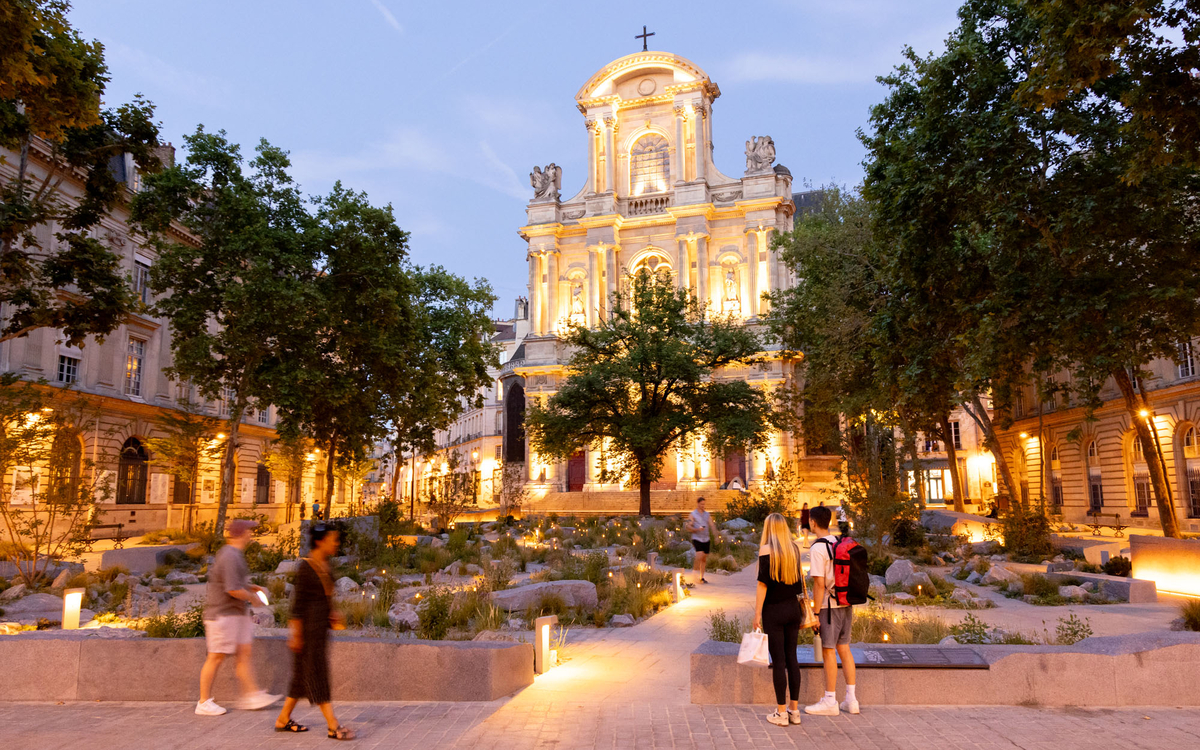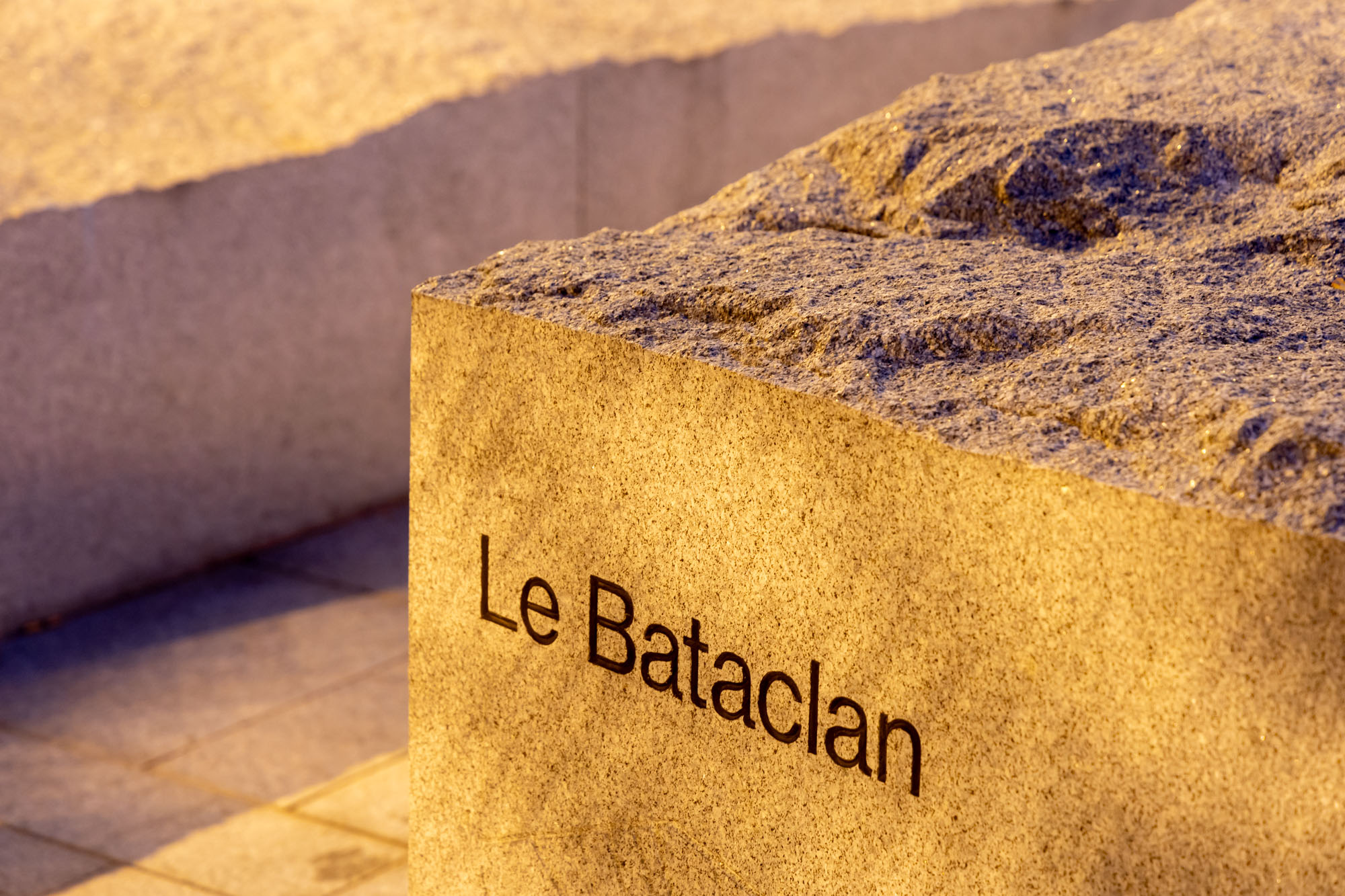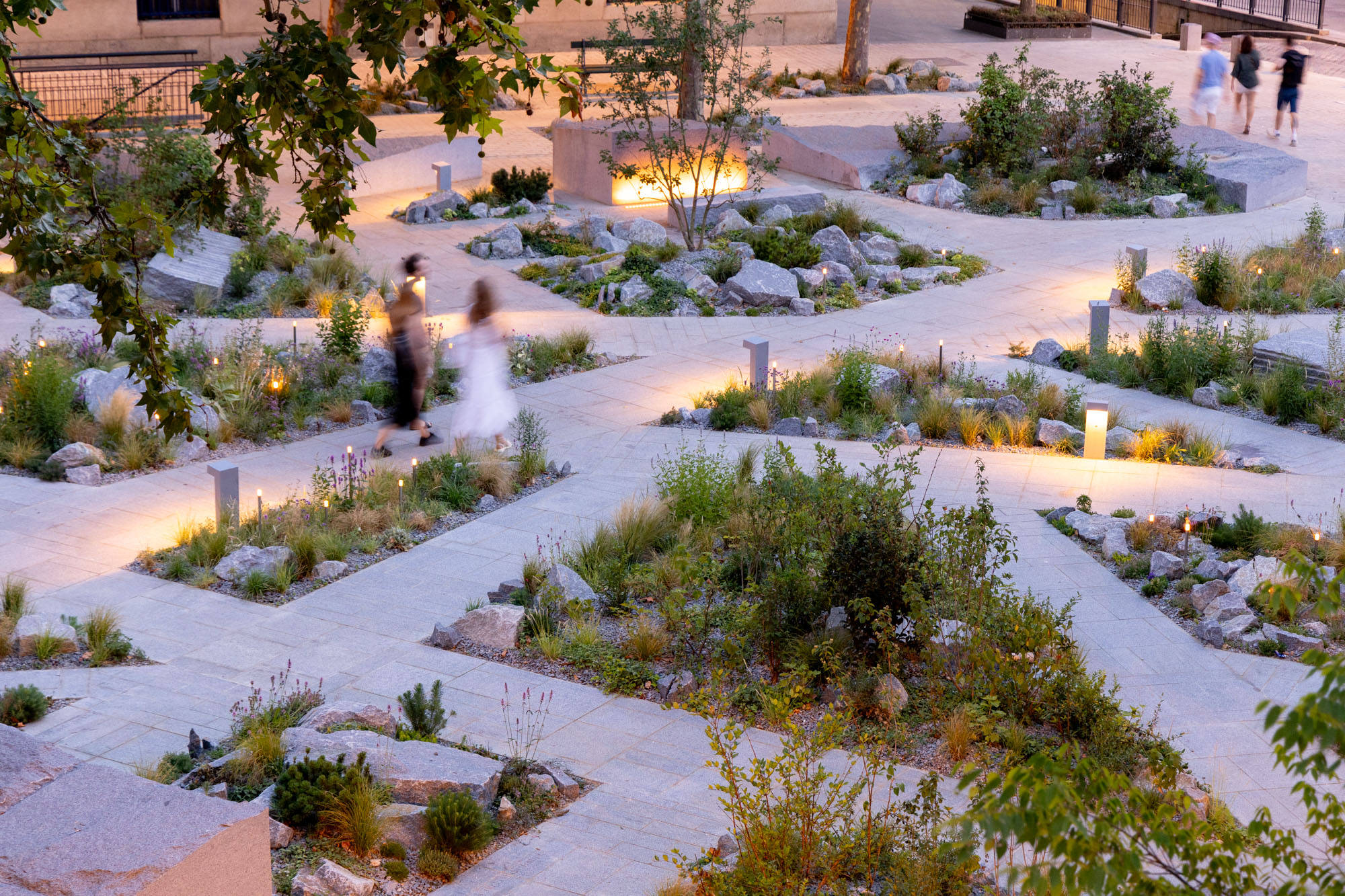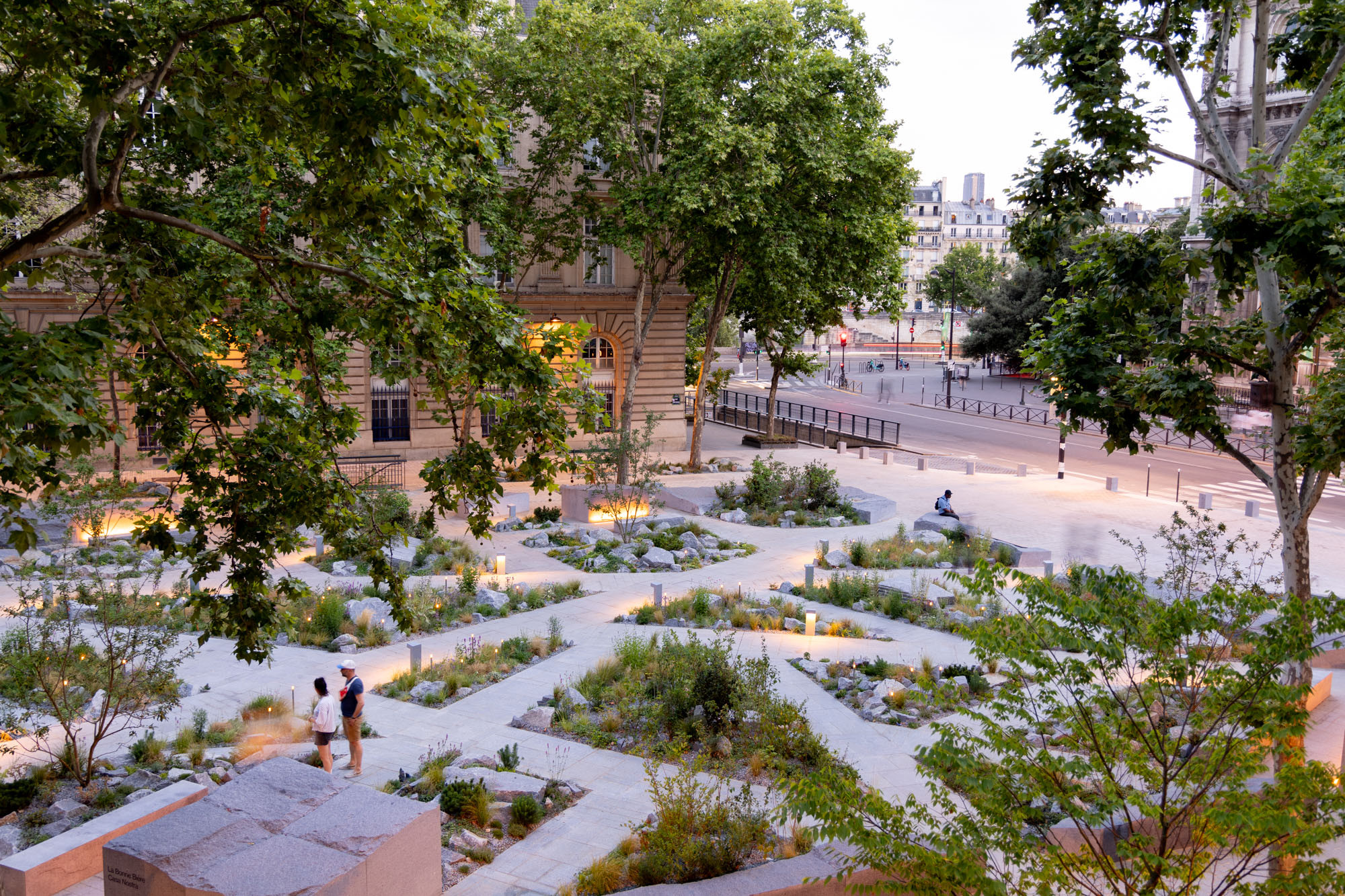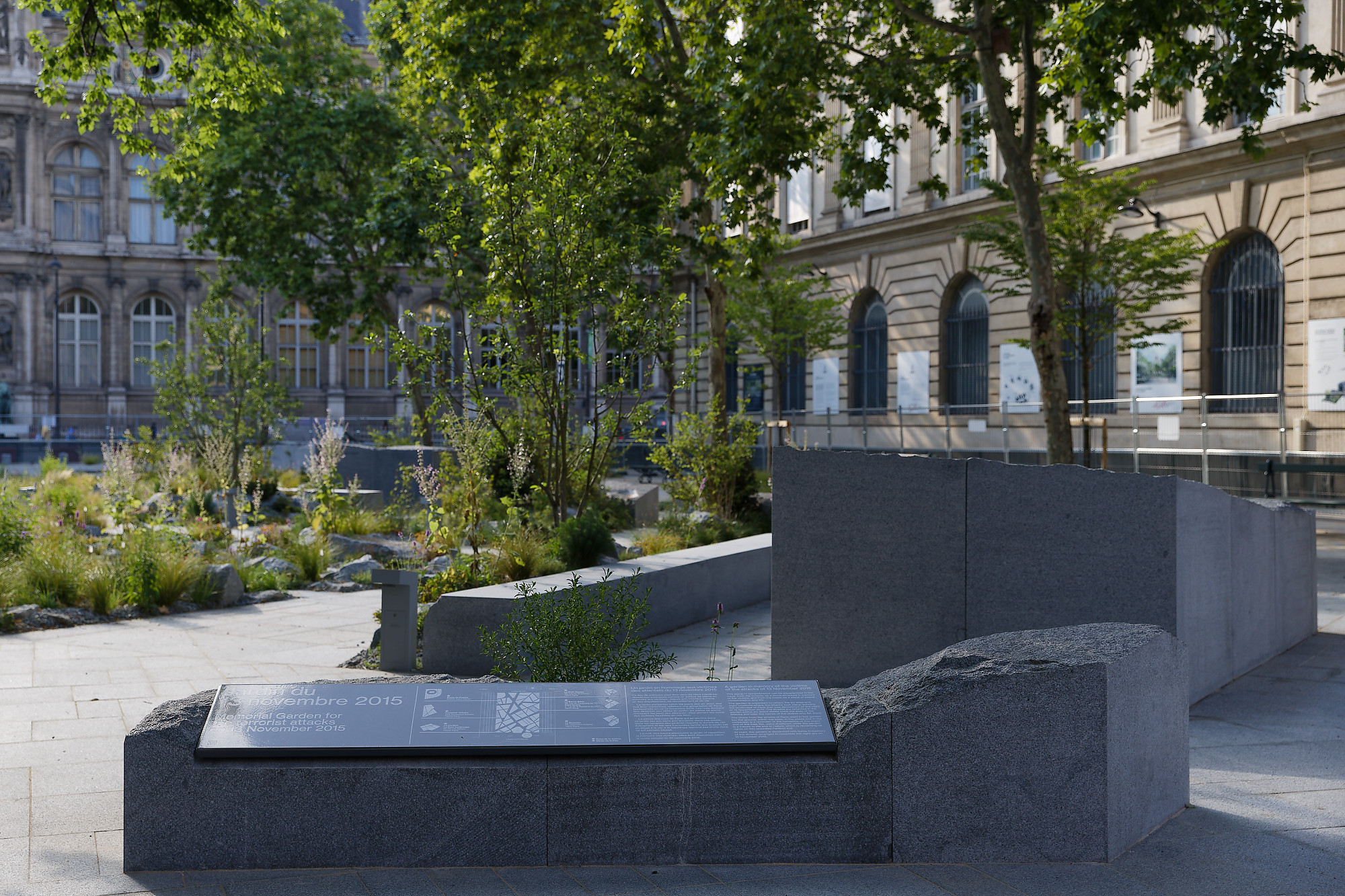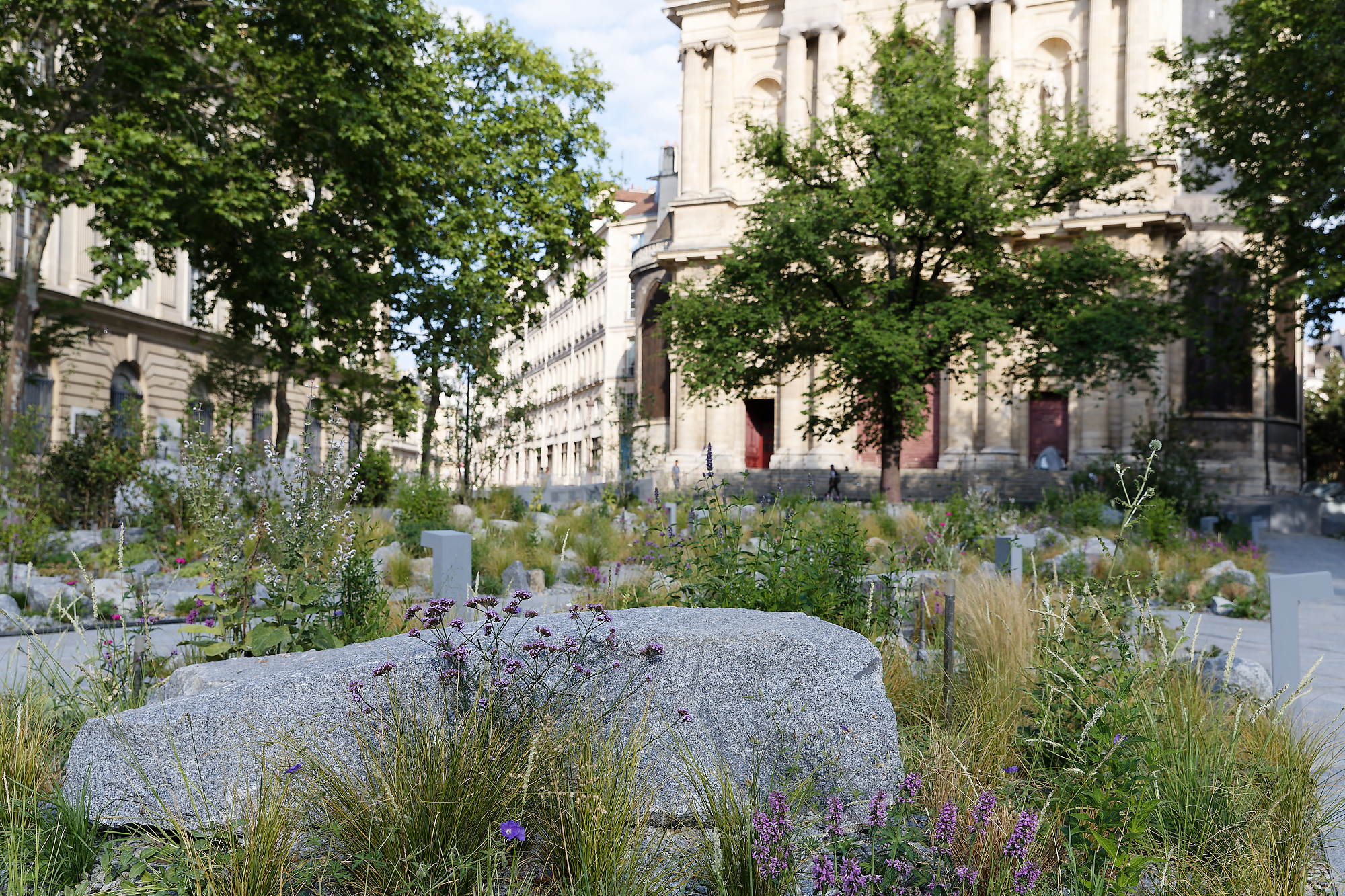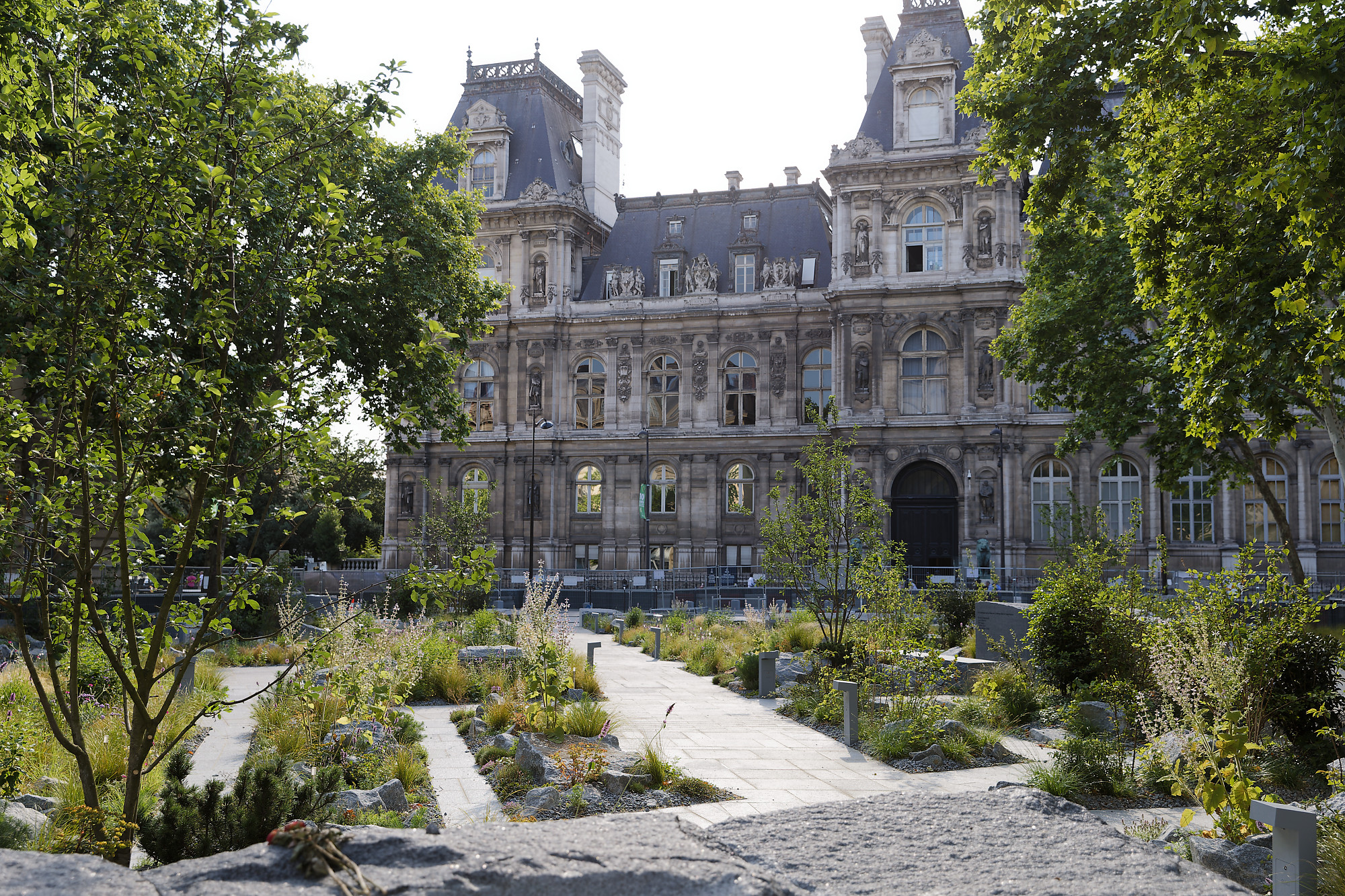Content
Cette page est aussi disponible en français
The garden in tribute to the victims of the November 13, 2015 attacks can be discovered on Place Saint-Gervais (Paris Centre).
The garden on video
Vidéo Youtube
It has been laid out at the rear of the Hôtel de Ville: a place of meditation in memory of the victims of November 13, 2015, but also an oasis of calm and soothing as a tribute to life and resilience, the memorial garden at Place Saint-Gervais (Paris Centre) is waiting to be discovered.
The project was led by Wagon Landscaping, selected by the Paris tendering commission following a procedure with negotiation, in which the victims' associations 13Onze15 Fraternité et Vérité and Life for Paris played an active role. They defined the guidelines for the development program, and in particular the principle of a "garden of remembrance", unanimously approved by the Paris Council on November 12, 2019.
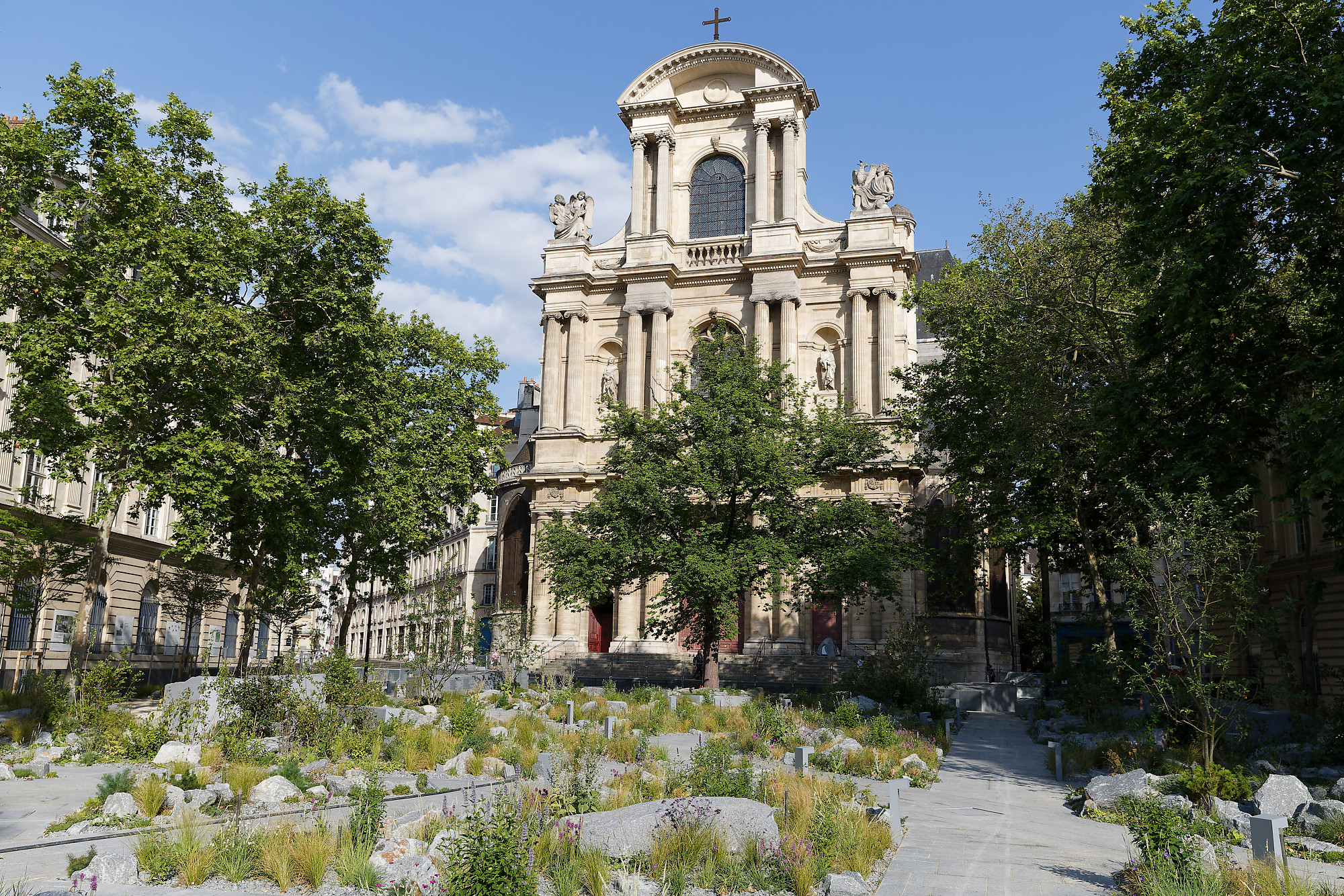
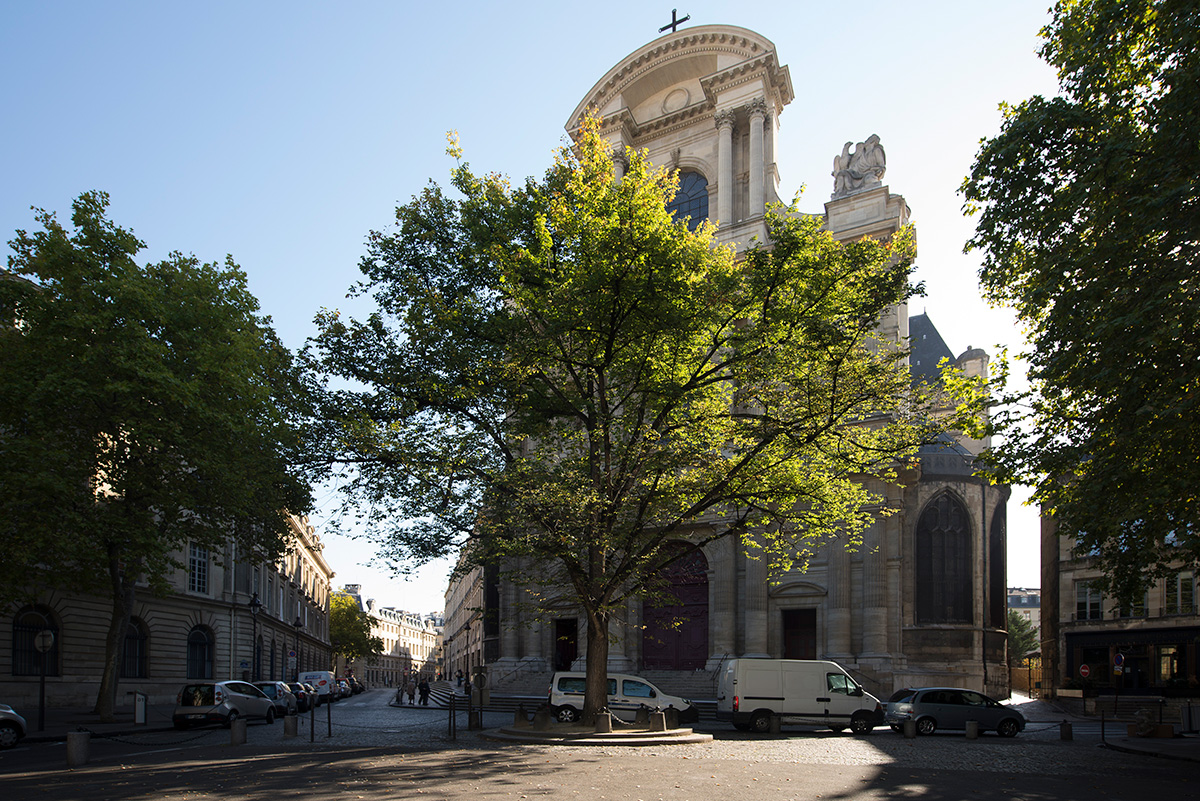

The six locations of the attacks symbolized on the site
The landscaping represents the sites of the attacks, allowing people to wander and reflect in the garden. The names of deceased victims will appear on steles symbolizing each of the locations affected (Stade de France, Le Carillon / Le Petit Cambodge, La Bonne Bière / Le Casa Nostra, La Belle Équipe, Le Comptoir Voltaire, Bataclan).
"The chosen site, Place Saint-Gervais, is not a place devastated by the attacks. It is both a different place in the very heart of Paris, and the synthesis of the six places struck by terror on November 13, 2015. The six places are concentrated here, because we will all remember November 13, 2015 and all the places of terror at Place Saint-Gervais. In this way, the site of the memorial garden is both neutral and concentrates the six sites of the attacks. It embodies all the painful experiences of the North-East of Paris that was attacked, but also of Paris as a whole. And beyond.
This is how the garden design came into being: plans of the six sites, the eight bombing locations, and their immediate surroundings are extracted from their context and used to compose the garden design. The six sites are treated in the same way, with no hierarchy of pain or memory, because they were all wounded in the same way. The aim is for each site to "heal" in the same way, and with the others.
In the memorial garden, you'll find the street layout of each terror site. Visitors will recognize them, each independently of the others, but forming a new, united whole. Six historic sites of terror form a new place of history and memory in the center of Paris.
Jean-Marc Dreyfus, historian
Each site of the attacks is commemorated by granite blocks.
Crédit photo :
Jean-Baptiste Gurliat / Ville de Paris
Memorial garden for the November 13 attacks, at dusk.
Crédit photo :
Jean-Baptiste Gurliat / Ville de Paris
The memorial garden mixes planted areas and granite blocks.
Crédit photo :
Jean-Baptiste Gurliat / Ville de Paris
The garden was designed by the Wagon Landscaping team.
Crédit photo :
Henri Garat / Ville de Paris
Memorial garden for the November 13 attacks, at dusk.
Crédit photo :
Jean-Baptiste Gurliat / Ville de Paris
Each of the sites, like the Belle équipe café, is evoked in the garden.
Crédit photo :
Henri Garat / Ville de Paris
The garden is open 24 hours a day.
Crédit photo :
Henri Garat / Ville de Paris
Garden in tribute to the victims of the November 13, 2015 attacks on Place Saint-Gervais.
Crédit photo :
Henri Garat / Ville de Paris
Which project?
Following an invitation to tender, the project submitted by the team led by Wagon Landscaping was selected: Wagon Landscaping - landscape (leader); Gilles Clément - artistic creation; SOJA architecture - heritage architect; AREP - civil engineering firm; Pratiques Urbaines - urban planner Jean-Marc Dreyfus - memory historian; Agence ON - lighting designer; Monono - sociologist; Biotope - ecologist; Cronos Conseil - security/safety consultant.
A that follows the rhythm of the seasons
In autumn, Christmas roses, cyclamen, anemones and dogwood fruit will provide a welcome change from the blooms we're used to seeing in November.
landscape designer for the winning agency
The presence of plants contributes to the development of biodiversity in the garden, making the tribute perpetual and alive.
Nature is an integral part of the tribute: the stone elements recall the harshness of the ordeal and the fractured lives, while the garden allows the living to unfold within this memory.
The presence of water in the hollows of the rocks and the presence of plants contribute to the development of biodiversity in the garden, making the tribute perpetual and alive.
A design that reveals a historic historical site
"The project seeks to strike the right balance between preserving the classic identity of the 19th-century square and adapting it to today's lifestyles. Bringing back a garden to the heart of this district will give back an identity to this square, so unloved that Parisians no longer know it exists. The aim is not to musealize the site, but to enhance the historical continuity of the square, while at the same time creating a memorial garden that can be enjoyed by all visitors and passers-by.
In this sense, an enclosed garden, with a stone wall, is for us an answer that both affirms a mineral vision of the square (seen from the outside), but also inscribes a square space that offers the possibility of meeting on its outskirts. In its size and composition, the garden can be likened to the classic Parisian square with a new look.
Mathieu Gontier, landscape designer with the winning firm
A place to live in central Paris
"The garden is generously planted and complements the tree, shrub and herb strata to enhance and complement the existing tree alignments by imagining their cortèges, on lower strata. The plant part of the project places the tree alignments in a new context: that of a square. The role of strata that complement the existing trees makes a major contribution to reducing the urban heat island and enhancing the site's ecological dimension. The garden thus affirms the virtues of the traditional square, in a contemporary adaptation.
Mathieu Gontier, landscape designer with the winning firm
Prefiguring the garden at École Du Breuil
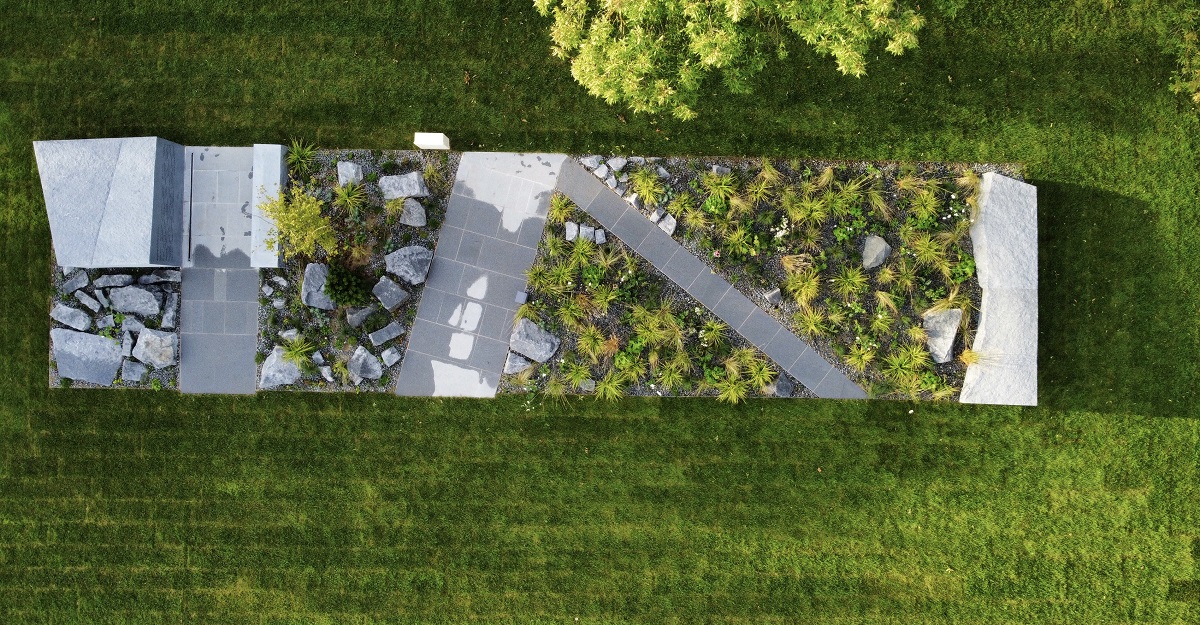
Aerial view of the prefiguration of the memorial garden
Crédit photo :
Wagon Landscaping
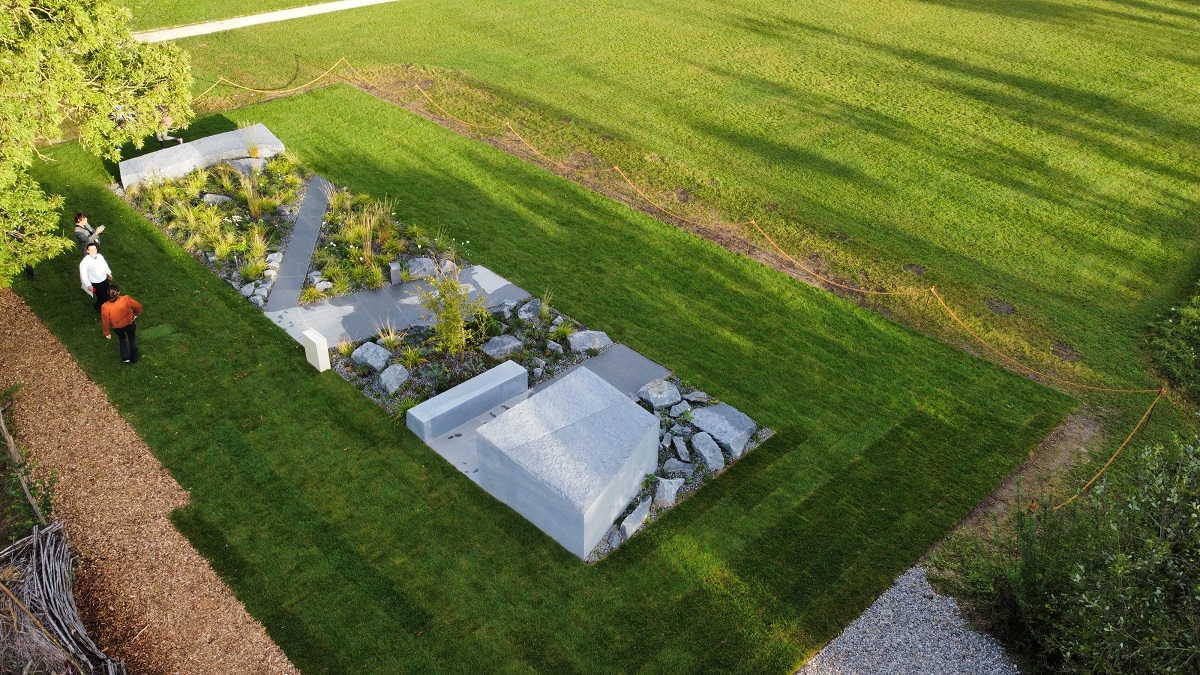
Aerial view of the prefiguration of the memorial garden
Crédit photo :
Wagon Landscaping
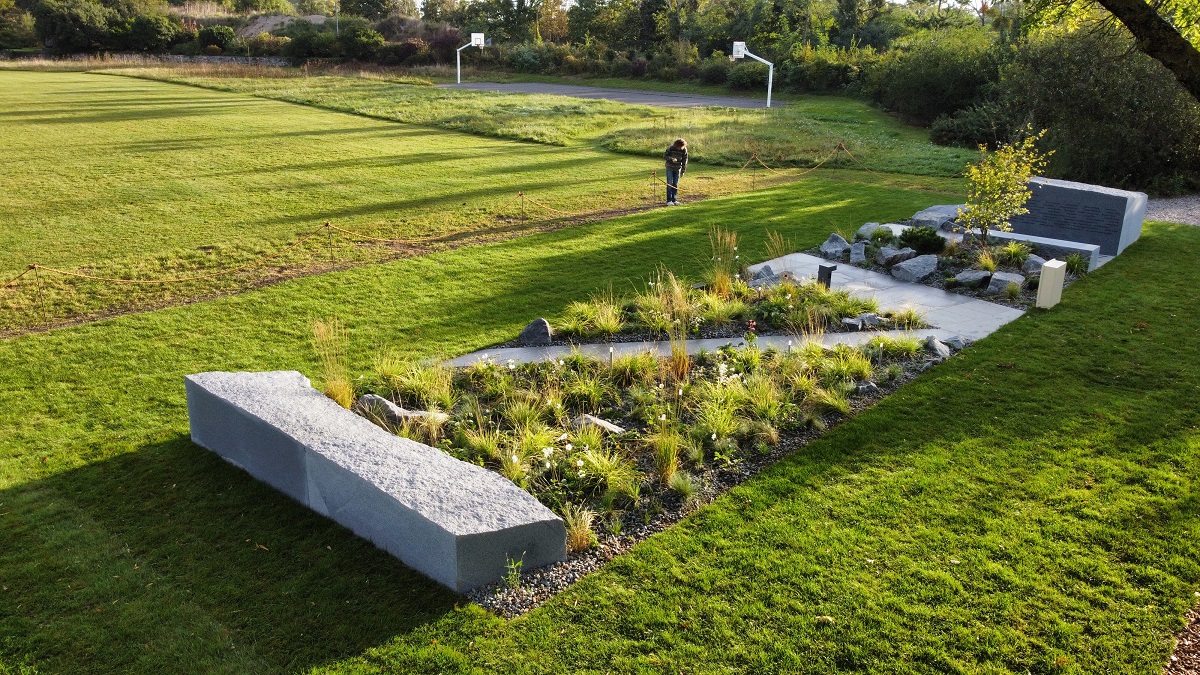
Overview of the prefiguration of the memorial garden
Crédit photo :
Wagon Landscaping

Prefiguration of the future memorial garden at Place Saint-Gervais - View of the stele
Crédit photo :
Ville de Paris / Christophe Belin

Prefiguration of the future memorial garden at Place Saint-Gervais - View of the planted areas
Crédit photo :
Ville de Paris / Christophe Belin

Prefiguration of the future memorial garden at Place Saint-Gervais - Lettering test
Crédit photo :
Ville de Paris / Christophe Belin

Detail of the vegetation on the memorial garden prototype
Crédit photo :
Wagon Landscaping
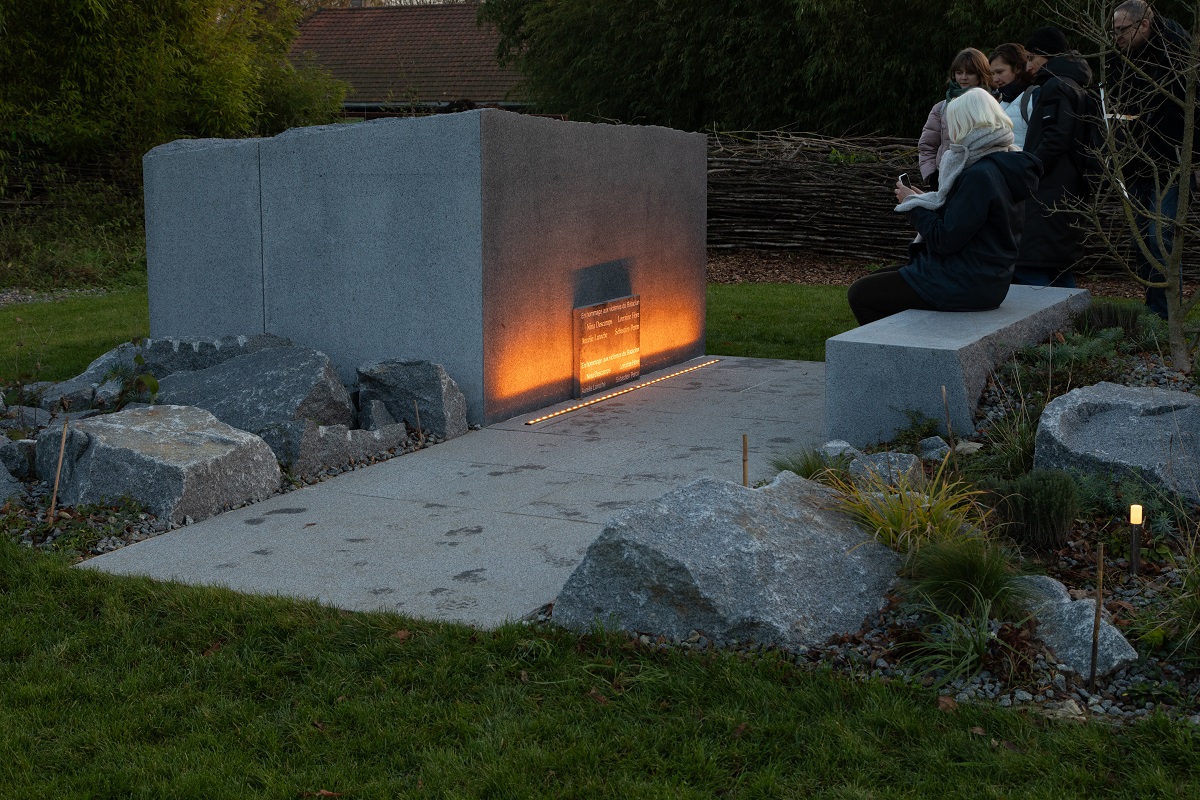
Prefiguration of the future memorial garden at Place Saint-Gervais - Illumination of the stele
Crédit photo :
Christophe Belin / Ville de Paris

Prefiguration of the future memorial garden at Place Saint-Gervais - Illumination of the stele
Crédit photo :
Wagon Landscaping

Prefiguration of the future memorial garden at Place Saint-Gervais - Illumination of the stele
Crédit photo :
Ville de Paris / Christophe Belin
In order to observe the development of plants over the course of a year, and to test the features designed for the site (steles, benches, lighting, etc.), a small part of the garden was created at full-scale at the École Du Breuil (12th arrondissement).
This prefiguration was laid out by the project team supported by the City of Paris and the landscaping group Wagon Landscaping. Students from the school were able to take part in the planting.
A design defined with victims' associations
The main thrusts of the program were defined in consultation with victims' associations.
They first defined the memorial project and expressed their desire for a garden, a place of life that brings to life the memory of the wounded, deceased victims and survivors of the November 2015 attacks: a place that brings people together and allows them to reflect, and where nature is very present to evoke the cycle of life.
The associations then chose the Place Saint-Gervais as the site. Its neutrality and centrality in Paris allow the memorial and commemorative vocation to come to life.
The challenge was to integrate the memorial project harmoniously into its environment and offer a breathing space in a peaceful central Paris.
The Place Saint-Gervais website
Place Saint-Gervais is part of a coherent urban ensemble with a strong heritage value. Situated in the heart of Paris, in the immediate vicinity of the Seine, the square is surrounded by a remarkable historical heritage.
The urban ensemble of Place Saint-Gervais is made up of a series of monumental facades arranged around Place Saint-Gervais and Rue de Lobau, and is characteristic of urban art as it was practiced between 1850 and 1880, when the rear facade of the Hôtel de Ville was designed and integrated into the pre-existing buildings. The latter is essentially from the second half of the 19th century, which gives it its apparent homogeneity (with the exception of the façade of Saint-Gervais church, which dates back to the early 17th century)."
Testimonies from the Mayor of Paris and associations
" The attacks of November 13, 2015 left an indelible mark on the heart of Paris. That's why, in close collaboration with associations, Paris has been keeping alive the memory of the victims and their families for the past seven years. It is with great emotion that we unveil today the outlines of the garden project for Place Saint-Gervais, this place of remembrance dedicated to the victims, their families, as well as to Parisians."
Anne Hidalgo, Mayor of Paris
"It's symbolic that the winner of the open competition for the memorial garden for the November 13, 2015 attacks should be chosen just a few days before the verdict is handed down on the defendants in the trial of the attacks. Wagon Landscaping's beautiful project, presented with emotion and designed with commitment, brings together all the sites of the attacks, represented in a legible and original way in a garden where everyone can reflect and dream, a place of both memory and life. We are grateful to the City of Paris, itself devastated by the attacks, for having supported the work that led to the choice of this project, which it is financing in full, with the concern to listen to and put forward the expectations of the victims through their associations 13Onze15 Fraternité et Vérité and Life for Paris. November 13, 2015, so that we don't forget".
Philippe Duperron, President of the 13Onze15 Fraternité et Vérité association
"For almost seven years, the City of Paris has stood by the victims of the November 13 attacks and Life for Paris, and we thank it for this. The desire to create a place of remembrance and meditation for the victims, their families, and the many anonymous people who want to show their solidarity, has now been fulfilled with a project that has been unanimously acclaimed. It's a satisfaction and a relief for us to see that our memorial issues are so well understood and accepted, especially in these trying times of trial."
Arthur Dénouveaux, President of the Life for Paris association
The work in pictures
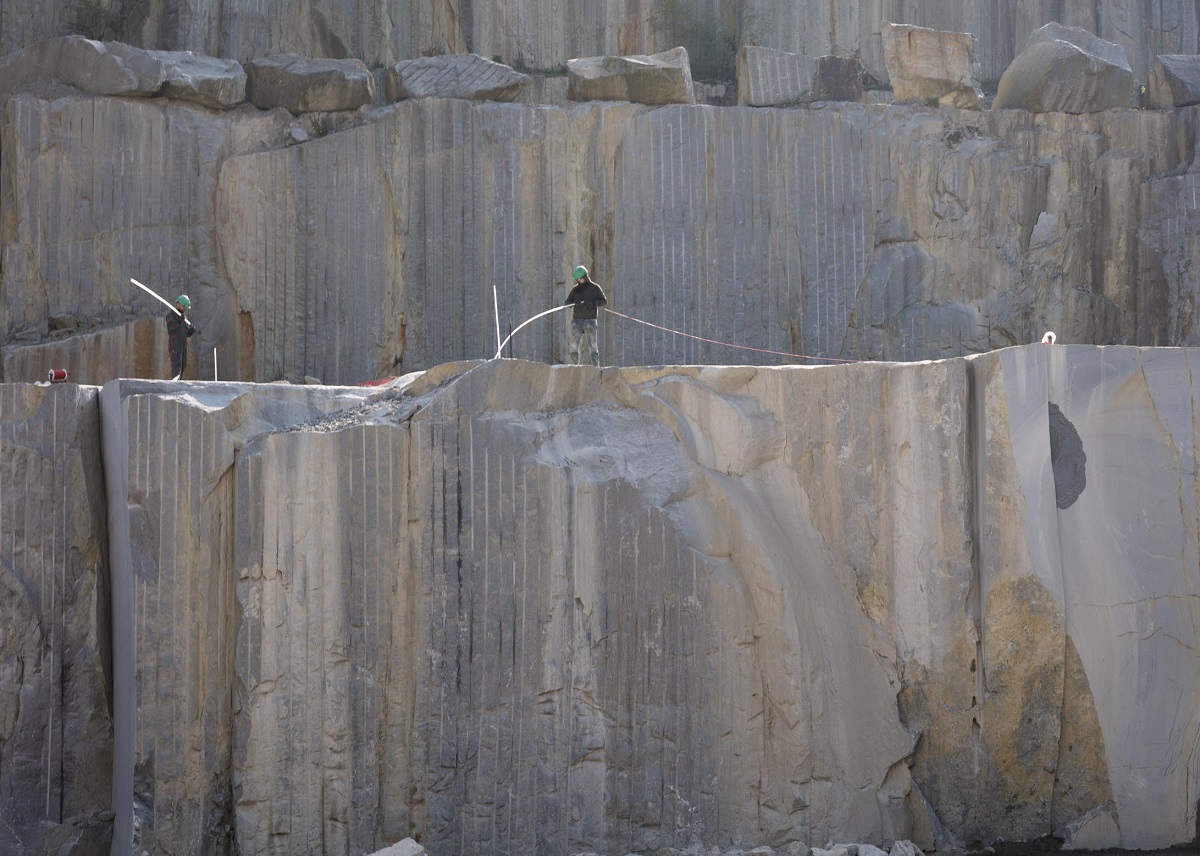
The Lanhelin blue granite quarry, from which the stones used to create the steles are extracted.
Crédit photo :
SOCAL
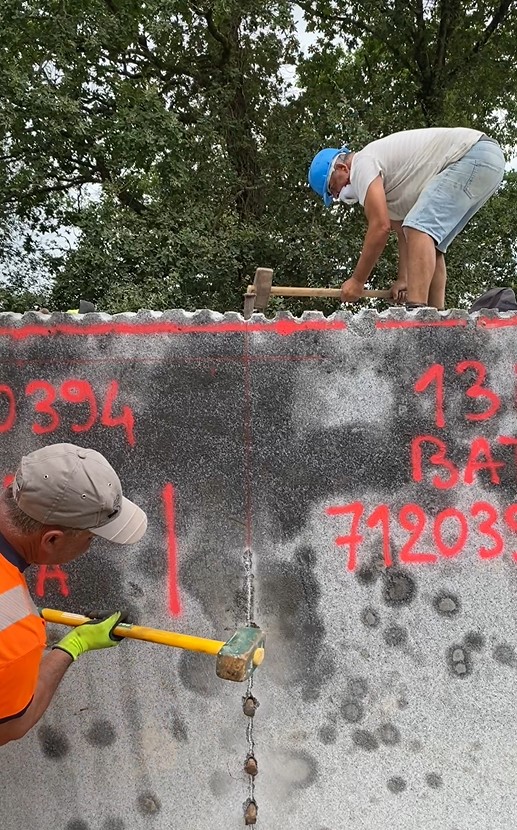
Splitting granite blocks by hand
Crédit photo :
Bretagne Granits
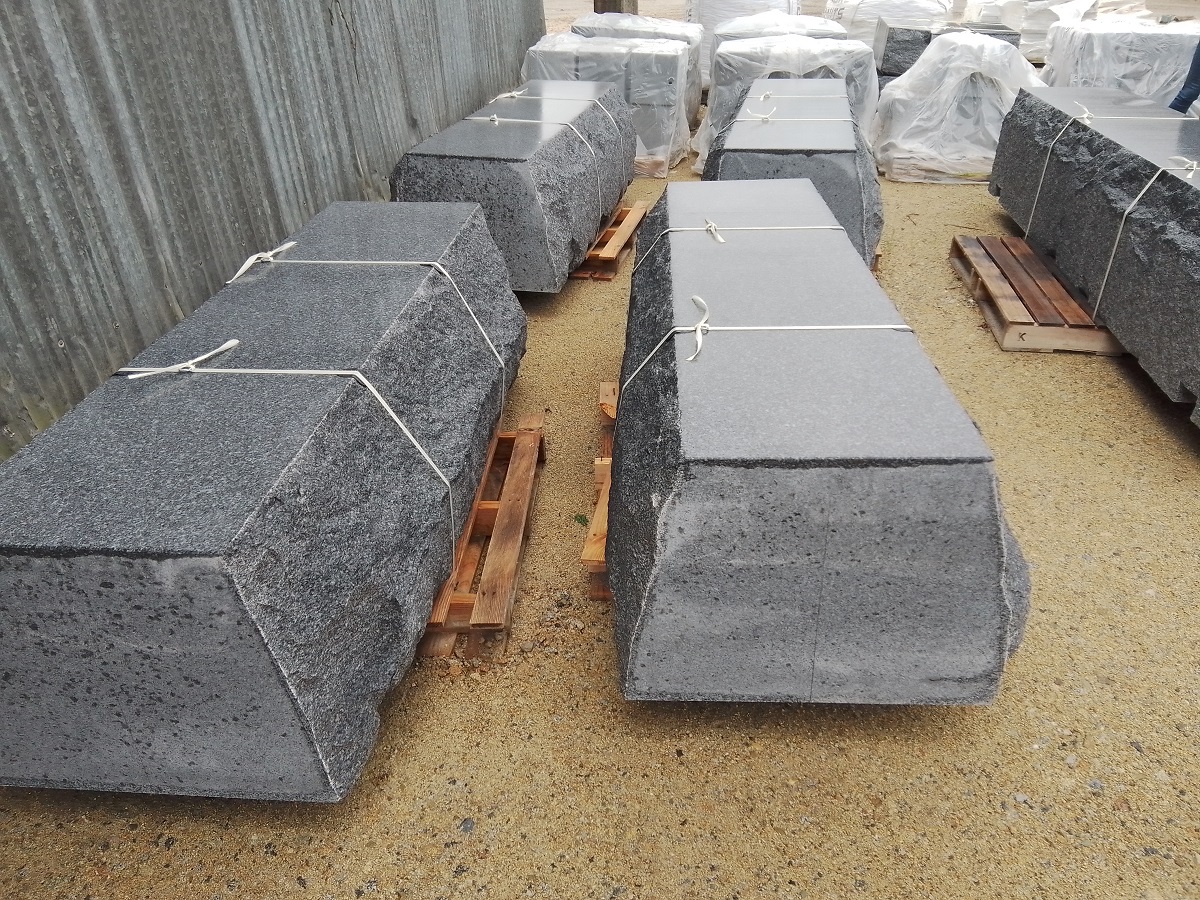
Granite benches to be installed in the future garden
Crédit photo :
Bretagne Granits

Site progress to September 2024
Crédit photo :
Ville de Paris - SAGP
The new waterproofing of the roof slab of the Lobau parking lot was completed in autumn 2023.
From February to April 2024, preparatory drainage work was carried out to complete the garden's natural stormwater runoff through the planted areas.
The square was then returned to pedestrian use from April to July 2024.
Work on the garden began in September 2024 and was completed in April 2025, with the planting.
The consortium chosen for the project is Loiseleur / Paveurs de Montrouge / Bretagne Granits / Cogelum / Leggerini gravure.
Practical info
The garden is located on Place Saint-Gervais (Paris Centre), behind the Hôtel de Ville de Paris. Subway: Hôtel de Ville
Interested in Paris news?
Default Confirmation Text
Settings Text Html
Settings Text Html
We want to hear from you!
Was this information useful to you?
Please note: we cannot reply via this form (please do not include any personal information).
